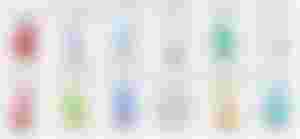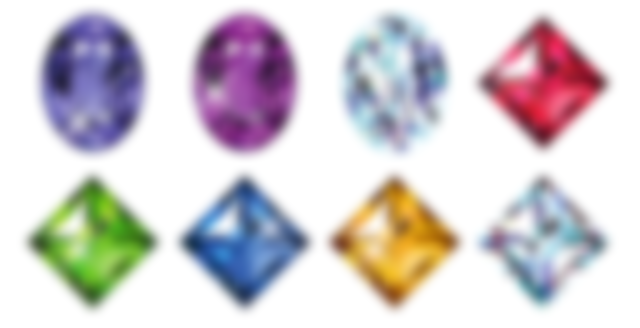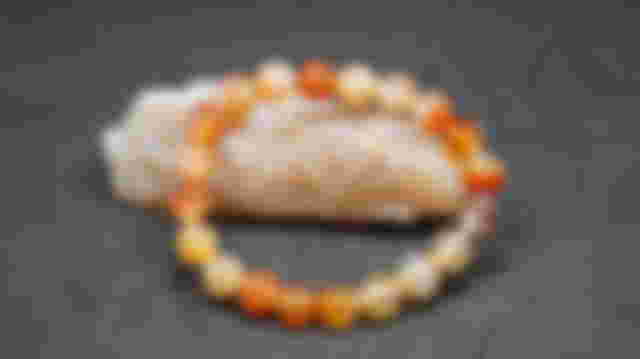The Bible is a Holy Book for many people, but it is also a great literary and reference work, loaded with wonderful imagery and information such as the names of precious stones.
INTRODUCTION
Precious and semi-precious stones are often alluded to in the Bible. The mention of the stones is sometimes figurative or poetical; but the gemstones are very real. We know from archaeological digs that they were highly valued and used from the earliest times for rings, seals, jewelry, etc. In reading the books of Exodus (Old Testament) and Revelation (New Testament), I counted a total of seventeen (17) different stones. Twelve (12) stones were on the breastplate of the Jewish high priest, each engraved with the name of one of the tribes. Seven (7) of the stones plus 5 more stones [another 12] are included in the description of the walls of Heavenly Jerusalem.
When viewing the list below, take note that one asterisk (*) indicates that the stone was part of the breastplate; two (**) means it was part of the wall; and no asterisk means both the breastplate and the wall have the same stones. Just for fun, I also associated the birth month, if there was one. You can’t find info about birth months in the Bible. That’s a man-made tradition but a very lovely one. Don’t you agree??

Diamond, Emerald and Sapphire
DIAMOND(*) - Diamond is harder than any other known substance and is an extremely valuable precious stone of pure carbon crystallized in the cubic system. 80% of the world’s supply of rough diamonds comes from Sierra Leone (a fact extracted from a James Bond movie). Global Witness was one of the first organizations to focus the world’s attention to the problem of “conflict diamonds” or “blood diamonds”, sold in order to fund armed conflict. It continues to be a subject of great controversy. [ GlobalWitness.org ] (April)
EMERALD - Emerald is among the most prized gemstones and according to archaeological findings it dates back 5000 years to Egypt and India. It’s easy to believe that its strikingly beautiful green color could have inspired Frank Baum to create “The Emerald City”, the fictional capital city in the Land of Oz, described in “The Wonderful Wizard of Oz”. Found also in Cyprus and Ethiopia during ancient times, and in South America during modern times; it is second in value only to the diamond. (May)
SAPPHIRE - Sapphire (from sappheiros, meaning "blue stone") is an absolutely gorgeous gemstone; a precious stone of transparent blue corundum, its color is due to traces of cobalt. Per AfricaGems.com, there are sapphires that are other colors: pink, green, purple, etc. There are also star-crossed sapphires. The stone looks like it has a star in the middle of it. Stunning! There is some dispute as to whether sapphire referred to in the scriptures is the modern sapphire as we know it. Some believe the reference is to the lapis lazuli, a comparatively rare semi-precious stone which has been highly esteemed since antiquity, from Mesopotamia, to Egypt, to Persia, to Greece, to Rome. The name “lapis lazuli” also means "stone of blue" (Latin for stone; and "azul", Arabic which means blue). (September)

Amethyst, Beryl and Carbuncle
AMETHYST - Amethyst is the most highly valued of the semiprecious quartzes. It is a form of transparent quartz that comes in varying shades of light pinkish violet to a deep purple. It is popular and widely available. Some believe it has healing properties and have credited it with curing a range of ailments – from relieving stress to overcoming alcohol and drug addictions. (February)
BERYL - Beryl is an important gem mineral with many varieties that are distinguished by their color. However, gemologists say this gem in its pure form is actually colorless and that traces of different “impurities” account for the color diversity and varieties. Nevertheless, the two most popular color varieties are emerald (the green variety) and aquamarine (the blue to blue-green variety). But I rather fancy the yellow beryl. (October/November – linked to the Zodiac)
CARBUNCLE(*) - Carbuncle is a precious stone of a deep red color, commonly called a garnet. In mineralogy, it is a deep red, cabochon-cut almandine, which is an iron aluminum garnet. (RE: “cabochon-cut”. Cabochons are not really "cut"; the stones are shaped and polished.) (January)

CHALCEDONY: Agate, Chrysoprasus, Jasper, Onyx, Sardius, Sardonyx
CHALCEDONY(**) - The name chalcedony is derived from Chalcedon, a city in Asia Minor. It’s a generic descriptive term that encompasses several varieties of quartz gemstones. Agate, chrysoprasus, jasper, onyx, sardius (or carnelian stone), and sardonyx are all varieties of chalcedony. This stone has a waxy luster, is translucent and fine-grained, and occurs in various colors.
* AGATE(*) - Agate comes from the Greek; named for the river Achates in Sicily where this stone is abundant. It can also be found in Arabia, Egypt and India. This gemstone is creatively striped by nature in varicolored layers. (June)
* CHRYSOPRASUS ( or CHRYSOPRASE)(**) - Chrysoprasus is a very rare form of quartz; it contains small quantities of nickel and has a light green color. Some describe the color as golden green or apple green. Chrysoprase is a cryptocrystalline, which means that it’s composed of submicroscopic crystals, i.e. too small to be seen by the naked eye. Pieces of jewelry made using this stone have been uncovered in ancient Egyptian graves. During the Middle Ages, it was very precious because it shined on the dark.
* JASPER - Jasper is a type of microcrystalline quartz, an opaque variety of reddish, brown or green, yellow chalcedony; sometimes white, but seldom blue. It is not a rare stone, inexpensive and often used to make small ornamental objects like ashtrays, candlesticks, ceramics, and jewelry. When heated, it will become clear and look like a diamond. (March)
* ONYX(*) - The onyx stone has contrasting layers of differing colors in parallel lines; usually black and white or brown and white; although many people think of onyx as solid black. Onyx is not just used for jewelry but also for home décor items and ornaments. It has also been for engraving seals. According to the Old Testament book of Genesis, it was a part of the treasures from Havilah. (July)
* SARDIUS - Sardius, in the past, was once highly valued Egyptians, Tibetans and India. It is a red stone, a form of chalcedony, which some call carnelian (a brownish-red mineral which is commonly used as a semi-precious gemstone). The Hebrew word "odem" translated sardius. Archaeologists have unearthed several items of jewelry made from this stone in cities and tombs of Palestine and Egypt. The name was given to this stone at Sardis in Lydia where it was worked and engraved. It can vary in color from pale yellow to reddish orange.
* SARDONYX(**) - Sardonyx is a variety of onyx; there are layers of orange-red sard and white chalcedony; an ornamental stone that is often used for seals and cameos. The array of color layers go from translucent to opaque. Sardonyx has a brown base, whereas onyx has a black base. (August)

Chrysolyte, Jacinth, Ligure, and Topaz
CHRYSOLYTE(**) - Chrysolyte is a transparent precious stone with a fine luster that has the color of gold mixed with green. The name comes from the Greek for “golden stone” and it is often compared to topaz or some other yellow gem. (September)
JACINTH(**) - Jacinth (or hyacinth) is dark purple; but when heated it loses its color and resembles the diamond. There is also a yellow-orange variety of zircon called jacinth. Various sources indicate the terms jacinth and hyacinth are no longer used in the gem trade, but they have historical importance.
LIGURE(*) - Ligure in Hebrew is “leshem”. The 12 Tribes of Israel had emblems (or symbols) and the ligure stone was for the tribe of Ephraim. It was considered to be a stone of mystery. Mysterious indeed. Try to pin down precise information about this stone. Some refer to it as a jacinth; others as a brown agate. I say: Eh! What's life without a little mystery?
TOPAZ - Topaz is a form of chrysolyte, and its most common color is wine-yellow though it can be found in white, pink, green, or blue. Topazios is the Greek name for St. John's Island in the Red Sea, Egypt, where topaz is found. This gem is also found in other parts of the world such as Brazil, Australia, Madagascar, Mexico, Namibia, Nigeria, Pakistan, and Sri Lanka. (November)

CONCLUSION
The exact date for when the custom or practice of using gems for personal adornments or giving them as gifts is unknown. Sumerian jewelry was found at Ur that dated back to 2500 B.C. The Egyptians have been credited with developing the art of making jewelry. (See Symbolism of Egyptian Jewelry.) Since ancient times, gems or ornaments made from them have had political and religious significance. Signet rings were once commonly used for business purposes. Some people believed (and still believe) precious stones have magical or healing powers.
ADDITIONAL LINKS OF INTEREST:
Gemstones | USGS Mineral Resources Program
The Emblems of the 12 Tribes of Israel
Cooper's Gem Mine - Biblical Gemstones
NOTE: Original Content Source
Hope you found this brief introduction about these various stones imaginative, interesting and thought provoking.




